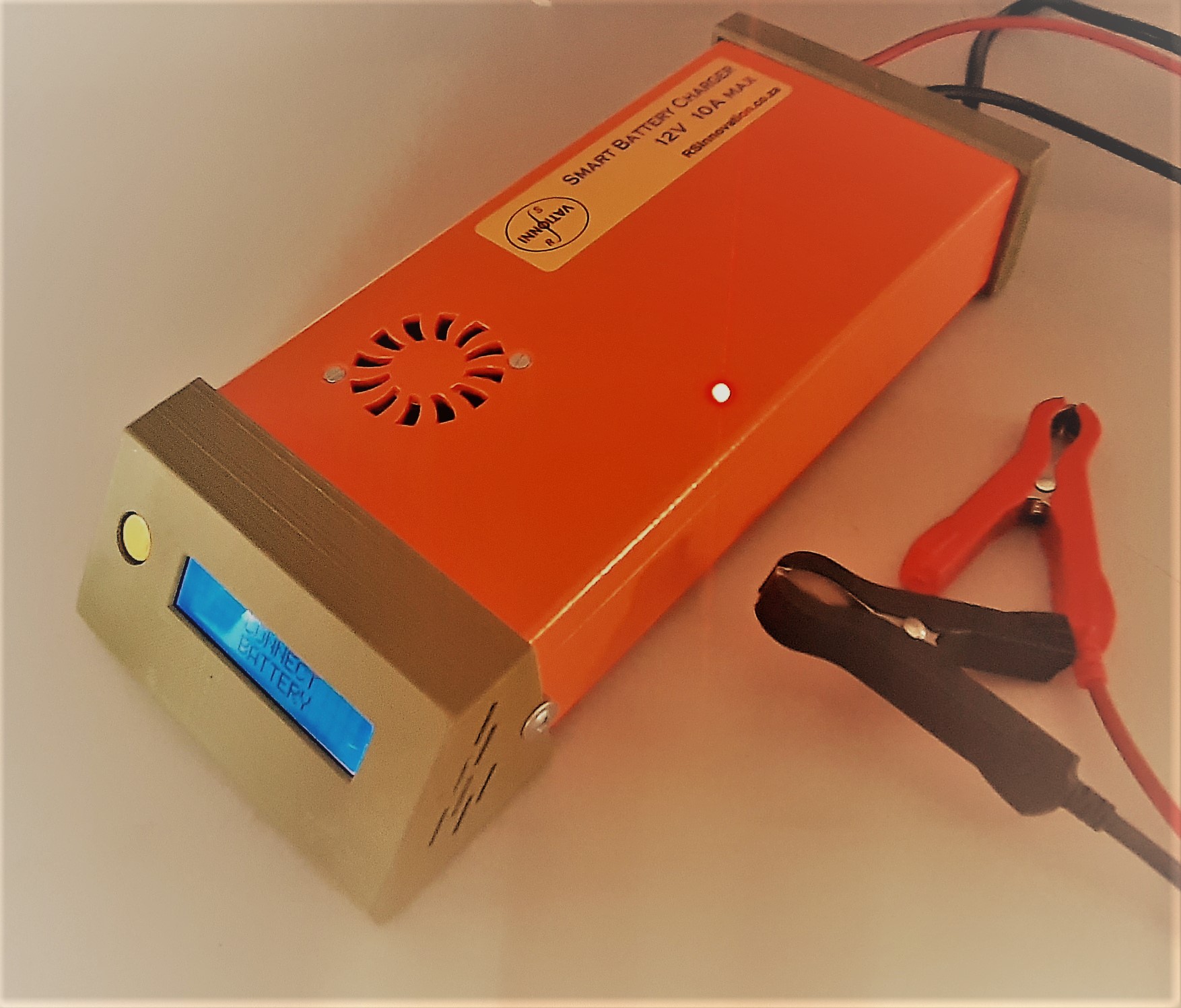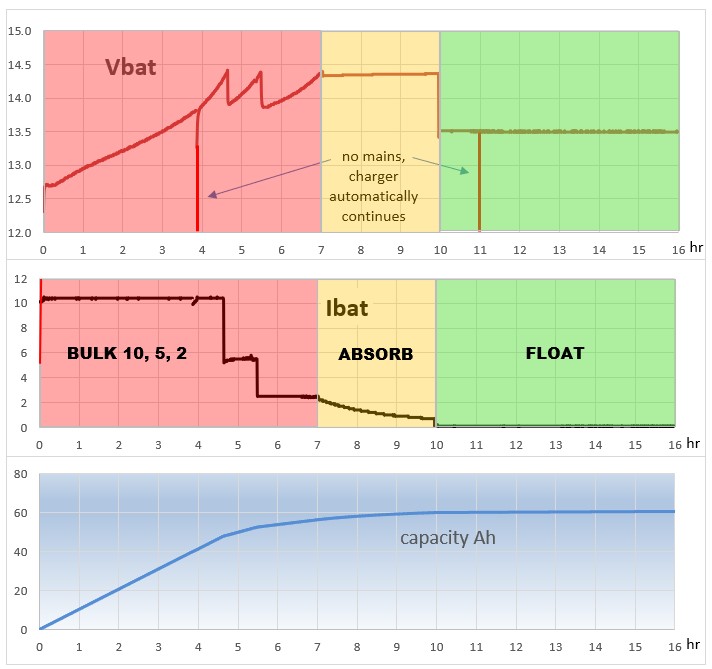
Smart Charger


Calling this battery charger SMART, is actually an under-statement.
Like most smart chargers, charging happens in 3 stages. BULK charging, ABSORB charge and FLOAT charge.
When the unit is powered up WITHOUT a battery being connected, it will ask you to connect the battery and start a FRESH charge cycle. Via the button, the user can select a charge current of 10A for large batteries: more than 50Ah, or 5A for batteries between 20 to 50Ah or 2A for small batteries up to 20Ah. If the button is not pressed within 20s, it will start charging at the safest current of 2A.
And that's it !
the rest is fully automatic and the charger can be left connected to the battery permanently.
So what makes it so smart then?
Well, it shows you the amount of charge going into the battery in Ah. If your battery was depleted and you have for example a 100Ah battery and after charging, only 32Ah was loaded, you know that your battery needs replacing.
What happens if the power went OFF and comes back ON ? (in certain countries, like South Africa, we have to endure several load shedding cycles per day)
This is where the 'trick' comes in: if the power is switched ON whilst a battery is connected, the charger loads the 'remembered' last state of charging and continues from there.
If no battery was connected, the charger set the Ah counter to 0 and starts with a BULK charge.
This section was created for the technically minded people
The curves on the left are made from ACTUAL data of a battery being charged and plotted in Excel, they are NOT artificially created graphs.
The battery tested was a fairly exhausted battery with an original capacity of 100Ah.
It shows the charger starting at 10A for about 4.7hrs (=47Ah). When the voltage reaches 14.4V, the charger switches the charging current to 5A for about 1hr (=5Ah). Note that the voltage will automatically go down at that stage, due to the internal resistance of the battery. The battery is then charged at 2A for about 1.5hrs (=3Ah). The total charge by now is 47+5+3=55Ah.
Thereafter, the charger will go to ABSROBPTION charge. The voltage is now held constant at 14.4V. The battery current will automatically drop exponentially. When the current goes below a bottom threhold, the charger will enter the FLOAT charge state. The average current was about 1.3A for 3hrs, so we now have about 59Ah.
In float charge, the voltage is now held constant at 13.5V.
A Lead Acid battery or even Lithium battery, can be left connected indefinitely to a 13.5V source.
During this charge cycle of 16hrs, we had 2 load shedding events, one at around 4hrs and one at about 11hrs. The charger continued afterwards without a blink.
Is this SMART, or what !
We can make battery chargers to your specifications and needs.

© 2025 RS Innovation
